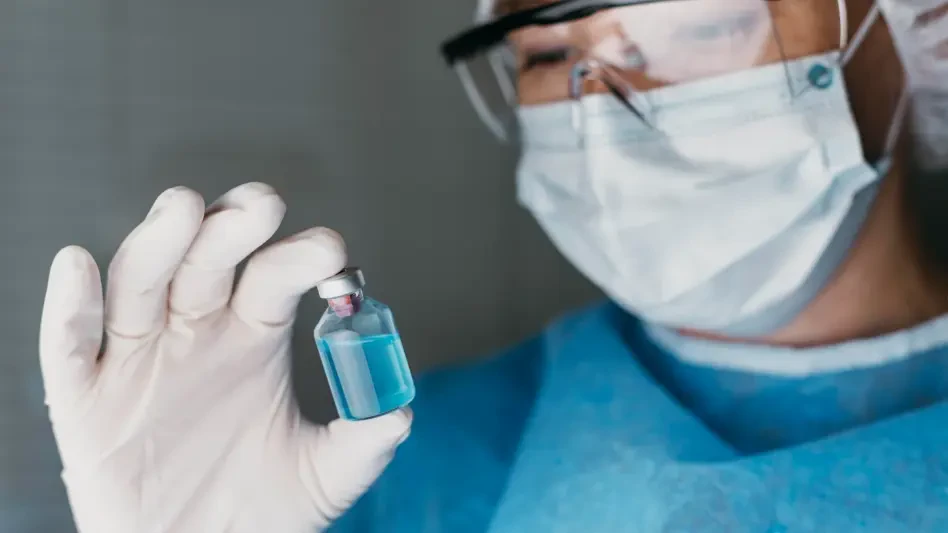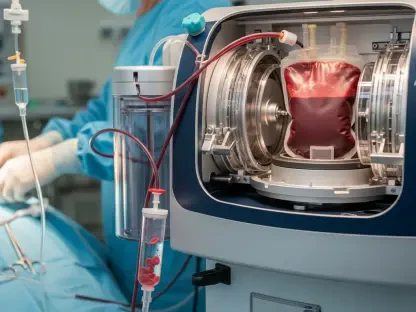Overview of the Malaria Challenge
Malaria remains one of the most pressing public health crises globally, with an estimated 263 million cases and 597,000 deaths recorded in the latest data for 2023, predominantly affecting populations in Africa. This devastating disease disproportionately impacts the most vulnerable, with children under the age of 5 accounting for a staggering 76% of all malaria-related fatalities. The burden on healthcare systems and communities in endemic regions is immense, underscoring the urgent need for innovative solutions to curb this epidemic.
The introduction of the RTS,S/AS01E vaccine, developed by GSK, marks a historic milestone as the first malaria vaccine recommended by the World Health Organization (WHO) in 2021. This development offers a glimmer of hope in the fight against a disease that has long evaded comprehensive control. Administered in a four-dose schedule starting at 5 months of age, the vaccine is now integrated into immunization programs across 24 countries, signaling a shift toward proactive prevention in high-risk areas.
The significance of this vaccine extends beyond its scientific achievement; it represents a potential turning point in reducing the global malaria burden. As stakeholders in public health and industry monitor its rollout, the focus remains on whether this intervention can live up to its promise amidst complex real-world challenges. This report delves into the evidence, implications, and future prospects of this groundbreaking tool.
Assessing the Impact of RTS,S in Real-World Settings
Insights from the Phase 4 Study
A comprehensive Phase 4 study conducted in Ghana, Malawi, and Kenya provides critical real-world evidence on the RTS,S vaccine’s effectiveness among 45,000 children under 5. Unlike controlled clinical trials, this research evaluates the vaccine’s performance in diverse, everyday conditions following its WHO endorsement. The study compares outcomes between vaccinated children in areas where the vaccine was introduced and unvaccinated children in regions where it was not, offering a clear perspective on its practical benefits.
Results from the study are striking, demonstrating a 30% reduction in malaria incidence and a remarkable 58% decrease in severe malaria cases among vaccinated children after one year following the third dose. Additionally, malaria-related hospitalizations dropped by 36%, while all-cause hospitalizations and mortality saw reductions of 21% and 17%, respectively. Among hospitalized children, the prevalence of anemia—a frequent complication of malaria—decreased by 19%, highlighting the vaccine’s broader health impacts.
These findings align closely with earlier data from the Malaria Vaccine Implementation Programme (MVIP) and Phase 3 clinical trials, reinforcing the reliability of RTS,S as a public health intervention. The consistency across different evaluation frameworks suggests that the vaccine can deliver substantial benefits even outside the stringent settings of initial testing, providing a strong foundation for expanded use in endemic regions.
Wider Implications and WHO Forecasts
The alignment of real-world outcomes with controlled trial results builds confidence in the RTS,S vaccine as a dependable tool for malaria prevention. This consistency validates the efforts to integrate it into routine immunization programs, particularly in areas with moderate-to-high transmission rates. The data underscores the potential for significant reductions in child mortality and healthcare burdens when vaccination is scaled effectively.
WHO projections add to the optimism, estimating that scaling up RTS,S alongside the newer R21/Matrix-M vaccine could prevent up to half a million child deaths by 2035. This ambitious forecast reflects a growing global commitment to tackling malaria through vaccination, as evidenced by the adoption of these vaccines into childhood immunization schedules in multiple high-transmission countries. Such integration marks a pivotal step toward sustainable disease control.
Beyond immediate health outcomes, the vaccine’s success signals a broader shift in global health strategies, prioritizing preventive measures alongside traditional interventions like bed nets and antimalarial drugs. This evolving approach, supported by international health bodies, could redefine how malaria is managed in the coming years, provided that momentum and resources are sustained.
Obstacles in Vaccine Deployment
The real-world implementation of the RTS,S vaccine is not without hurdles, as effectiveness can vary due to differences in malaria transmission intensity and the coverage of complementary control measures. Factors such as inconsistent access to healthcare and varying community engagement levels can influence the vaccine’s impact, making uniform outcomes challenging to achieve. These variables highlight the gap between controlled trial efficacy and practical application in diverse settings.
External challenges, including climate change, further complicate the rollout, as shifting weather patterns may alter malaria transmission dynamics and strain logistical efforts. Additionally, supply chain issues and limited healthcare infrastructure in remote areas pose significant barriers to ensuring that the vaccine reaches those who need it most. Addressing these logistical constraints requires coordinated efforts across multiple sectors to maintain vaccination schedules.
To overcome these obstacles, strategies must focus on strengthening healthcare systems and ensuring equitable access in endemic regions. Investments in training for healthcare workers, community education, and robust distribution networks are essential to maximize the vaccine’s reach. Collaborative initiatives between governments, industry, and international organizations will be crucial to navigate these complexities and sustain progress in malaria prevention.
Regulatory Framework and Global Health Strategies
The WHO’s endorsement of RTS,S/AS01E in 2021, followed by R21/Matrix-M in 2023, has been instrumental in shaping global malaria prevention policies. These recommendations provide a clear directive for countries to adopt malaria vaccines as part of national immunization programs, with 24 nations already aligning with these guidelines. Such regulatory support underscores the importance of unified standards in addressing a disease with profound regional impacts.
Integration into national health systems reflects a commitment to adhering to international health protocols while tailoring implementation to local needs. Post-marketing surveillance remains a critical component, ensuring that safety and efficacy are continuously monitored as the vaccine reaches broader populations. This ongoing oversight helps maintain public trust and informs adjustments to deployment strategies as new data emerges.
The regulatory framework also facilitates partnerships between pharmaceutical companies, governments, and global health entities, fostering an environment where innovation and accessibility can coexist. Compliance with established standards ensures that the rollout of malaria vaccines remains a priority, paving the way for sustained investment and policy support in the fight against this persistent threat.
Looking Ahead at Malaria Prevention with RTS,S
The RTS,S vaccine holds immense potential to serve as a cornerstone in reducing the global malaria burden, particularly when combined with emerging innovations in vaccine development and other control measures. As research continues, the possibility of improved formulations or complementary vaccines could further enhance prevention efforts. The industry must remain agile to incorporate these advancements into existing frameworks.
Global health initiatives and funding will play a pivotal role in accelerating vaccine distribution, especially in high-risk areas where resources are often limited. Strategic investments from both public and private sectors can help bridge gaps in access, ensuring that the benefits of RTS,S reach the most vulnerable populations. International collaboration will be key to mobilizing the necessary support for widespread coverage.
Shifting priorities among consumers and policymakers, alongside economic conditions, will also influence the long-term success of malaria vaccination programs. As awareness of the vaccine’s impact grows, demand for equitable health solutions may drive further policy changes. Balancing these dynamics with practical implementation will determine whether RTS,S can truly transform the landscape of malaria prevention in the years ahead.
Final Reflections on a Turning Point
The Phase 4 study delivered compelling evidence that the RTS,S vaccine significantly lowered malaria incidence, severe cases, hospitalizations, and mortality among children in high-risk areas. This robust data, consistent with prior clinical and pilot program findings, affirmed the vaccine’s critical role in combating a disease that claims hundreds of thousands of lives annually. The global health community took note of these results as a beacon of progress.
Looking back, the integration of RTS,S into immunization programs across multiple countries stood as a testament to international commitment, bolstered by WHO’s strategic endorsements. Yet, the journey revealed persistent challenges in real-world deployment, from logistical barriers to environmental factors, which demanded innovative solutions. These insights shaped the path forward for stakeholders.
Moving into the future, actionable steps included ramping up investments in healthcare infrastructure and fostering partnerships to ensure equitable vaccine access. Enhanced focus on community engagement and adaptive strategies to address evolving transmission patterns emerged as priorities. The success of RTS,S signaled a promising foundation, but sustained effort and global cooperation were deemed essential to fully realize a new era in malaria control.









